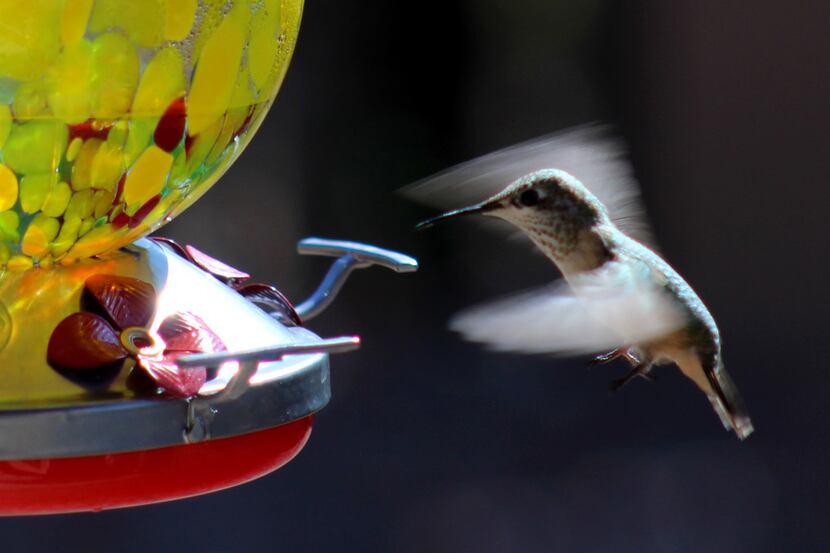As the days get longer and wildflowers begin to bloom, hummingbirds have followed their regular migratory pattern and are back in North Texas this spring.
Each year, the tiny, fast-flying birds make their way to Texas from Mexico, gracing us with their presence for a relatively short amount of time, said Brett Johnson, an urban biologist with the city of Dallas. The birds tend to be most prevalent in North Texas from mid-March until mid-April, and depart the region around late September for warmer and sunnier weather.
“They’ll be around for quite a while — that’s just when people tend to notice them the most,” Johnson said.
During hummingbird season, many people set out hummingbird feeders in their yards to see them up close. By feeding hummingbirds, these people are also helping the environment and playing a role in keeping some of nature’s “most critical pollinators” flourishing, Johnson said.
But hummingbirds are a little picky about what they like. Here’s how to attract the little birds at home and where else you can spot them this spring:
What attracts them?
Hummingbirds have particular taste, it seems. They love brightly colored, showy flowers with red, yellow, orange and white colors such as honeysuckles and yellow columbines, Johnson said.
It’s best to use native plants in your backyard in order to support a healthy environment, he added. Not only do they use less water, but they also are better suited for the area. Some examples of native plants that will attract hummingbirds include red yucca, Turk’s cap and obedient plants, also known as false dragonhead.
Besides flowers, hummingbirds are also attracted to feeders with a clear, sugar-water mixture that is usually one part sugar and four parts water. A red dye is not necessary to attract the birds, and some ornithologists say the colored dye might be damaging to birds.
Just like most of nature, hummingbirds aren’t the cleanest creatures, Johnson added. The birds may leave a residue behind after feeding that can potentially sicken another bird. Therefore, it’s best to clean feeders every few days, or a couple times a week, preferably just with hot water.
Additionally, since hummingbirds aren’t active at night, it’s a good idea to take feeders inside when it gets dark out. It’s possible for raccoons, possums or other larger animals to damage the structures, Johnson said.
Fire ants are also attracted to sugary droppings on the ground, which is another thing to keep in mind — especially for anyone who is allergic to them.
How else can you see them?
If you don’t have a feeder at home or don’t have a backyard, there’s still a way to see hummingbirds.
Consider going to a park near you and watching the “edges of natural areas,” which is where hummingbirds tend to gravitate for food, Johnson said. This often includes areas where shrubs grow.
Hummingbirds are also drawn to wildflower fields, another common place to spot them.

